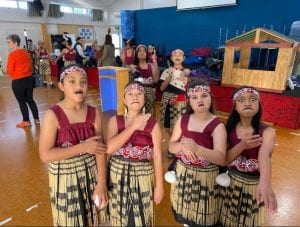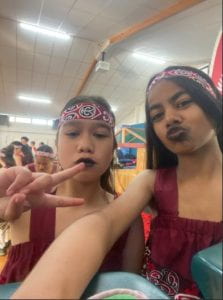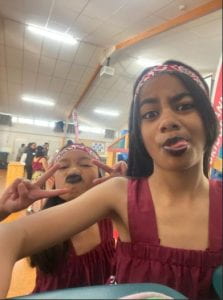This week for Miss White’s inquiry group we learned about te wiki o te Reo Māori for Māori language weekend.
First, I had to make a copy of the te wiki o te Reo Māori google slide. There were 15 tasks to do during the whole block. I first started off with the KWL chart. K stands for Knowledge, W stands for Wonder, and L stands with Learned. For knowledge I had to write down what I already know about Māori. For wonder I had to write down questions I would like to know about Māori, and for learned I had to write down what I already learned.
Next, I had to learn how to introduce yourself in Te Reo Māori. I had to watch a video below and write my own mihi in the box. For example: Ko Brooke tōku ingoa. After I finish watching the video, I had to watch the video linked below, and to find the Māori translation for the Kupu. For example: what is this? He aha Tenie. After I finished doing the matches in Māori, I had to choose one of the stories below to listen to or read. The options were Journey of a waka, ika a whiro, oriori, nga pepeha a nga tupuna, Rahui, he toi whaka iro, weaving tukutuku, and kakano. I picked Rahui because it looks interesting.
Then, I had to do SSR Selfie (Super Silent reading). I had to write down who is the author or illustrator, who are the main character, recount what happened in the story, and list three words with your meaning in your own words from the story or book you have listen to or read. For example: Happy means kind of excited. After we finished, we had to find ways we can respond to, for example: Kei te pehea Koe? We had to translate it to English to Māori. One of the sentences were, I am feeling well. We also had to join the Kupu – Using the line tool, match the Kupu to its’ correct translation.
Korero between friends. Insert a photo of yourself, and a photo of a classmate. Make your speech bubble ask your friend how they are in Te Reo. Choose one of the responses from slides 5-6 for your classmate to use in response to you. My partner for the slide was my friend called Sila. She asked me “He Pene Tenei.” which means this is a pencil. After that we had to Kei te aha Koe? What are you doing? Watch the video, then match the Kupu. I completed all of the Kupu and matched it with the right order. Then he had to do another Korero between friends. Insert a photo of yourself, and a photo of a classmate. Make your speech bubble ask your friend how they are in Te Reo. Choose one of the responses from slide 8 for your classmate to use in response to you. She asked me “Kei te pai ahau” which means I am feeling good.
After, we had to choose one of the tasks below to complete as your DLO part of your project. The options were to interactive quiz (Kahoot, Booklet, Quizlet etc. Google Slide quiz etc.), virtual tour – create a virtual tour using Screencast and Google Earth to create virtual tours of significant Māori cultural sites, digital Storybook – Use Pixton to make a comic or Google Slides to make an animation of narratives that incorporate what you’ve learnt about Māori legends, myths, or historical events, infographic – Use Google Drawings to present key information or language you’ve learnt from the Māori culture, Māori Language Phrasebook – Use Google Docs, or Slides, or Drawings to create a Māori Language Phrasebook, or Māori Worksheet – be a teacher and create a worksheet you could use to “test” student’s knowledge of Māori language. This can be designed for a Year 1 student, or a Year 8 student. I picked to make a DLO.
Lastly, we get to play Māori math games. There were numbers in Māori, Māori Color, Fruit & Veg, and Animals, and last for not least Māori Vocabulary – this game requires you to learn the words before playing. After we finish playing the different type of games, we had to take a screenshot of our score.



